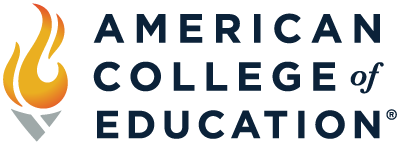
LinkedIn recently listed the top 10 most desirable skills employers look for, including communication skills, analytical and problem-solving skills, and interpersonal effectiveness. As educators, we’re always talking about “the next steps” for our students and how what they’re learning is preparing them for their next step, whether it’s college, the military, or the workforce. While it’s important to have progressive conversations about skill-building, it’s equally as important to integrate skills into your curriculum.
Communication skills, analytical and problem-solving skills, and interpersonal effectiveness are all skills you can easily work into your curriculum, especially in English Language Arts classes.
I teach mostly juniors, and given that it’s a pivotal time for a student to consider their post-high school futures, I make a conscious effort to frame my classwork in a way that students find relevant to whatever path they plan to pursue.
Case in point: Communication.
My class just wrapped up writing argumentative research papers, where they were tasked with making an argument built on evidence and research, not just their personal opinion. This exercise was intended to get the students to present arguments steeped in facts rather than their personal opinion, and it also requires students to acknowledge the counterclaim.
Even before I became a teacher, I remember several employers remarking that candidates who possess the ability to write and communicate well usually stand out among candidates who can’t do those things well. That feedback came from employers in all kinds of fields, not just businesses that focused on communication.
LinkedIn backs this up, arguing that “employers want the people who can understand what others are saying while expressing themselves in a clear and concise manner.” Implementing argumentative research papers gives students tremendous practice in expressing themselves while understanding the other side.
When we do debates and presentations later in the year, we deepen that practice and simultaneously strengthen interpersonal effectiveness (No. 5 on LinkedIn’s list) and analytical and problem-solving skills (No. 3). The process of researching both sides of a debate, looking beyond the surface to identify gaps in reasoning, and diplomatically challenging opposing arguments calls for students to think critically and creatively.
It’s an ability that takes practice and discipline, but that ability that can be applied to every industry or aspect of life, and ELA courses are uniquely positioned to help students exercise it.
Of course, debates and argumentative research papers aren’t the only ways to get students to think outside of the box. When students express discontent or confusion with reading or daily assignments, I make sure that these assignments include practical opportunities for them to think critically. To enforce this skill, replace quick recall questions with open-ended response questions that require students to provide evidence for their answer.
Replace multiple choice questions with prompts that require them to infer something about the text. This practice reinforces the necessary skills to validate a claim, and requires the student to dig deep into a text to determine the answer.
Another easy-to-implement practice? Depth of Knowledge question stems. Instead of making the questions, have students quiz their classmates using only DOK Level 2 or 3 questions. Not only will students answer higher-level questions, but they further insert themselves into the process by having to think of questions to ask.
There is certainly value in every aspect of education.
History and social studies courses often overlap in teaching similar skills as ELA, and they teach students how to be informed citizens, both politically and culturally. Economics and government also serve to teach students how some of the most important aspects of our country and financial structures operate. Math and science courses also focus heavily on problem-solving and analytical/critical thinking.
But the foundation for skills that employers look for is built in ELA classrooms. I’m thankful to be on the ground floor, helping students form that foundation.
Set your students up for future success by becoming an expert in literacy. Explore American College of Education’s M.Ed. in Literacy.

